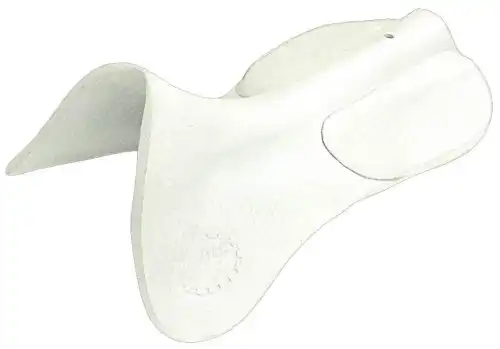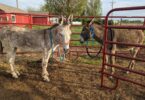Ride the Right Way—Safely!
Tack and equipment play an important role in equine safety. Selecting the correct tack is only the first step—you must also regularly inspect and clean your tack to maximize its useful life.
The Selection Process
Each horse has unique preferences and needs, which is why tack isn’t one-size-fits-all.
Properly fitting tack and equipment is essential for a safe, comfortable ride.
As horses grow, mature, age, or fitness levels change, you may need to re-adjust, replace, update, or re-fit your tack.
JS Horsemanship put together a helpful video about bits, bridles, and reins, as well as an overview of saddles, stirrups, and girths:
Here is a list of basic tack that should be purchased for, or fitted to, your specific horse:
Bits
There are hundreds of different styles of bits, ranging from a fat, rubber-mouthed snaffle (the mildest of bits) to a twisted-wire curb bit (a more severe bit).
Some horses have sensitive mouths, others need a stronger bit to pay attention. Other horses cannot tolerate a bit at all and may go better in a hackamore (bitless bridle).
Work with a trainer to help figure out the best bit for your horse. You may need a different bit for different disciplines, too, as English and Western bits can be very different.
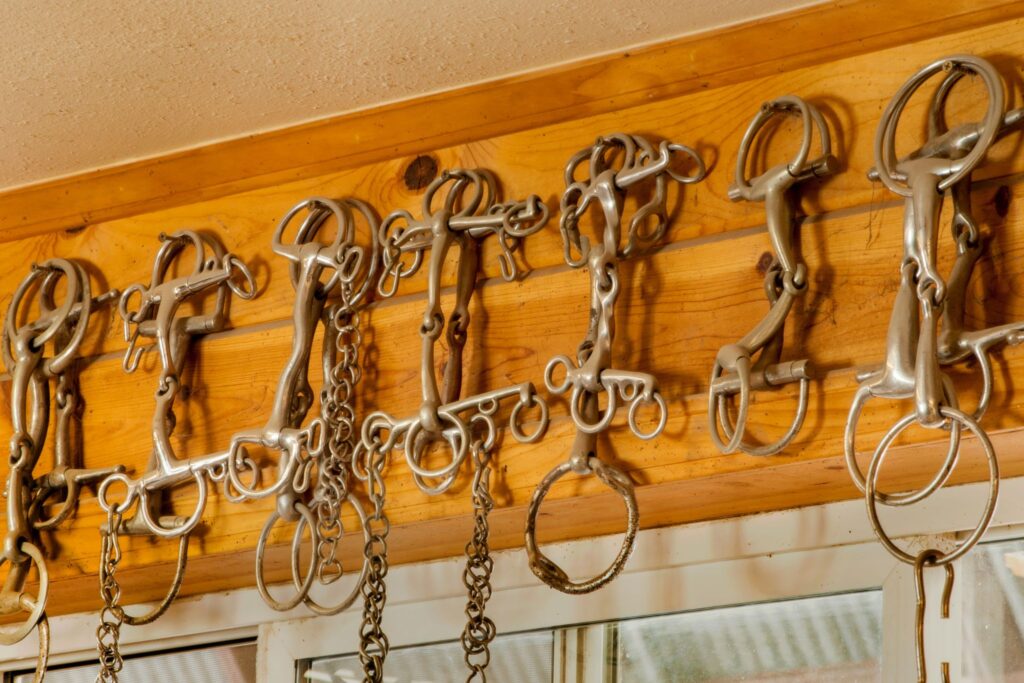
Source: Canva
Putting too harsh of a bit in a sensitive horse’s mouth can result in a fearful horse that may act up to avoid pain. On the other hand, using too mild of a bit can result in a horse that ignores their rider and behaves in an unsafe manner.
Saddles
Saddles are sized to fit both the horse ( tree/gullet) and the rider (seat size and flap length).
Many saddles now have interchangeable gullets so you can customize the fit to different horses without buying a new saddle for each one.
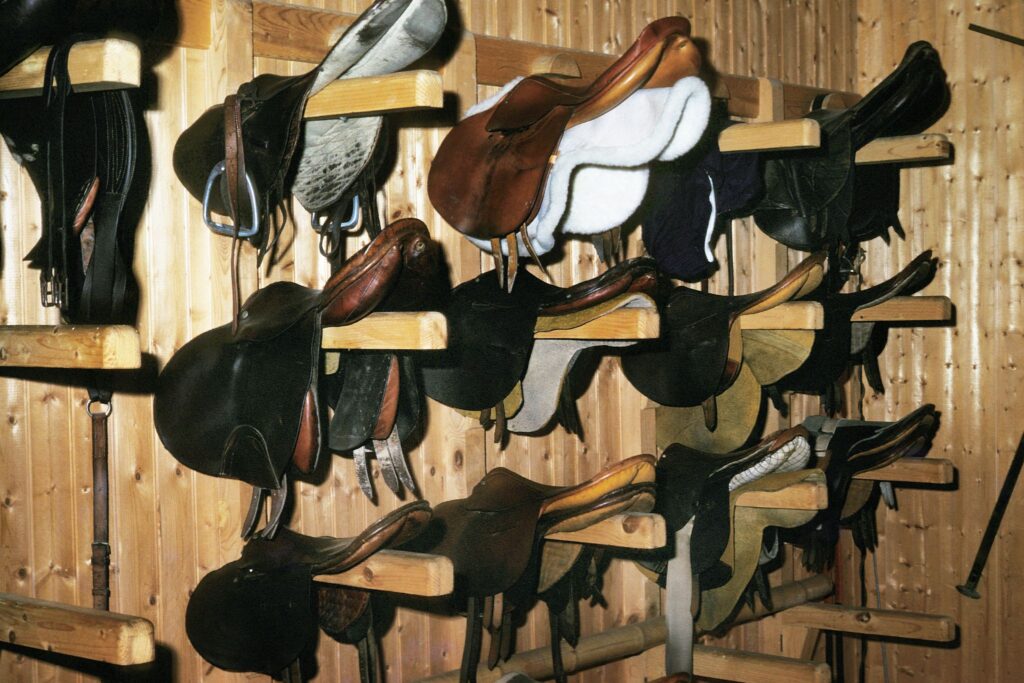
Source: Canva
Tree sizes generally come in small, medium, wide, and extra-wide.
An ill-fitting saddle can cause pain, which also could lead to disobedience when you’re riding.
Pro Tip: Check out Jessica Willis’ Western Saddle Fit Course and Krystal Kelly’s All About Bits Course
Supplementary Aids
Some horses need a LOT of leg to get them moving.
Others require more refined cue application to help an experienced horse know which exact movements you’re requesting.
Riders and their trainers may elect to use additional aids.
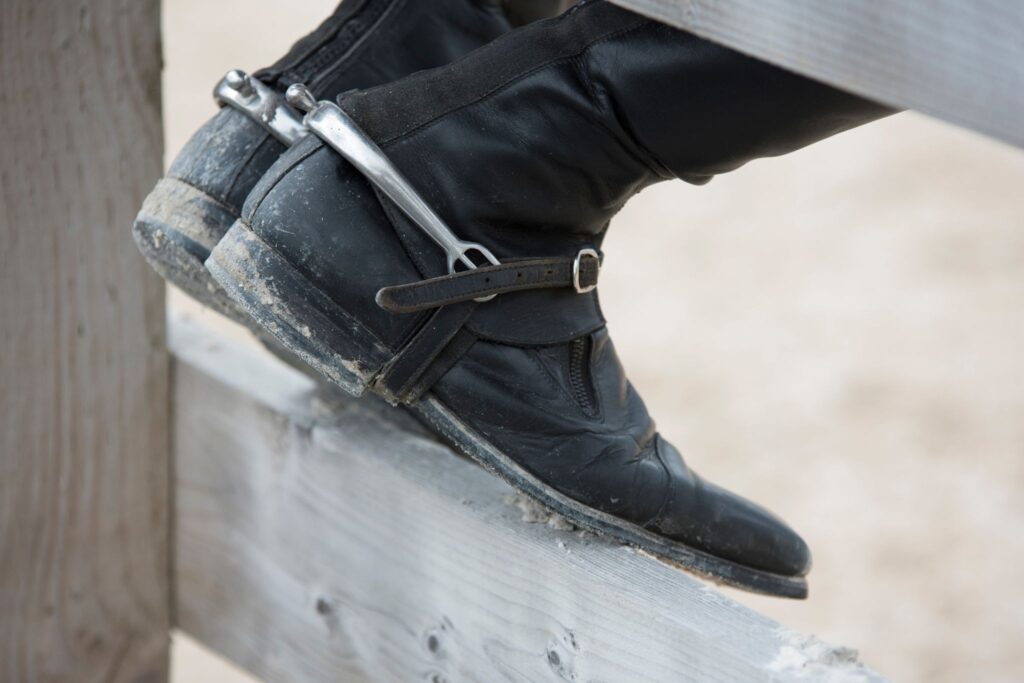
Source: Canva
Spurs
Spurs are a great tool, when used properly, to encourage your horse to react with more precision and less pressure from the leg. This can be especially helpful in higher levels of competition, where subtle cues are rewarded.
When used improperly, spurs can be a negative tool.
Some riders should not use spurs, and some horses just don’t go well with them. Work with a trainer to determine if spurs may help your ride and to learn how to correctly use this tool.
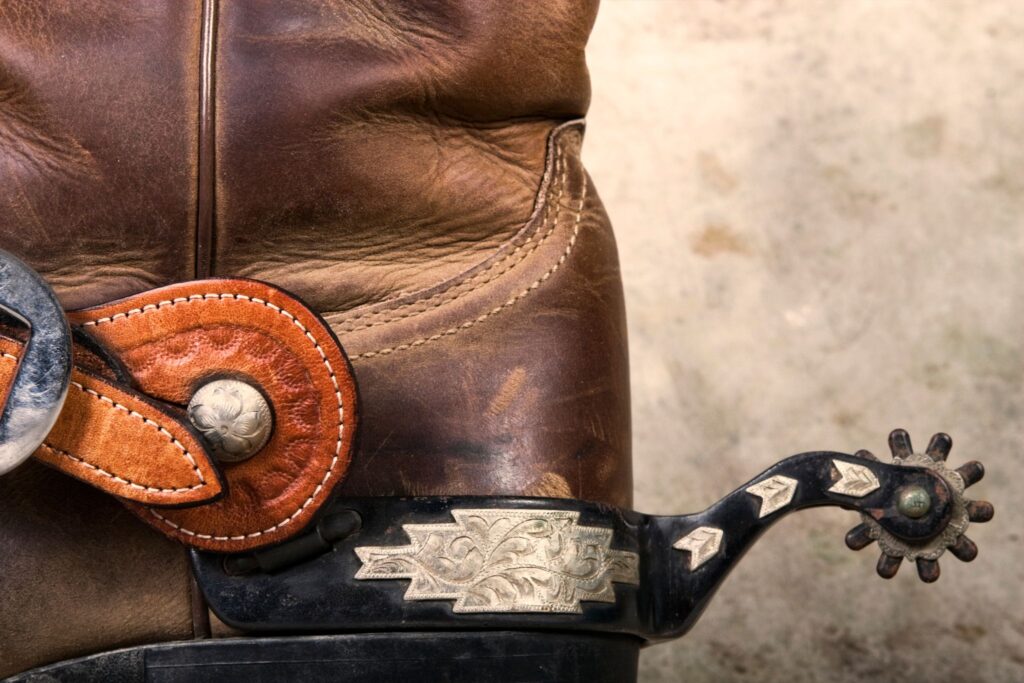
Source: Canva
Crops and whips
A riding crop or whip is used as an extension of your arm.
It is most common to see a shorter crop in jumping, and a longer whip in
dressage .
A crop should only be used when other riding aids are ineffective—or as a deterrent for bad behavior that doesn’t need to be used at all.
Crops should be used behind the girth, to encourage the horse to move forward. At many competitions, crop/whip use is heavily regulated and exhibitors can be excused from the ring or further penalized for improper use.
Girths
First, make sure you have the right size girth for your horse.
A girth that is too small may be difficult to tighten or be too tight for your horse to work comfortably. Too large, and you may not be able to tighten it enough, causing the saddle to potentially slip or roll.
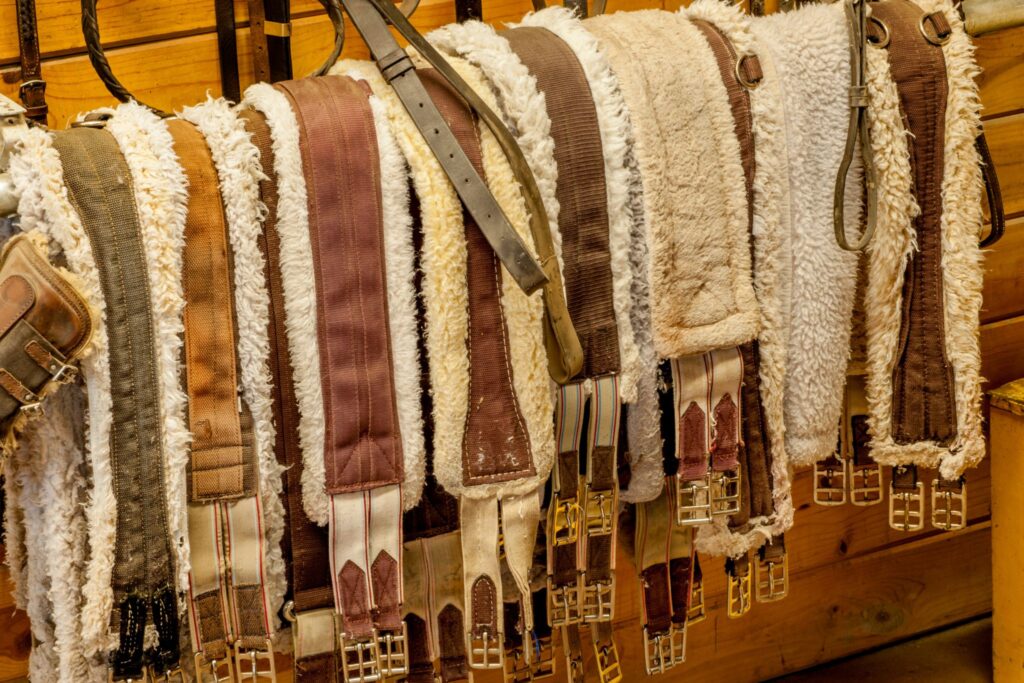
Source: Canva
Additionally, different horses may go better in different girth styles; some horses are more sensitive than others and require things like shoulder relief for increased range of motion, or a stud guard girth for jumping.
Blankets
If you decide to blanket your horse against inclement weather, remember these items come in all shapes and sizes; a too-small blanket can rub and cause hair loss and sores.
A blanket that is too large is a safety hazard.
While you can swap blankets between similarly-sized horses, you should always measure and ensure the correct fit for each individual.
New to blanketing? Check out this step-by-step blanketing guide from SmartPak.
Inspecting Tack and Equipment
It is a good idea to check your tack and equipment every time you use it. Use both sight and feel for inspection.
What should you look for?

Source: Canva
Leather: Inspect for cracks, dryness, mildew, or other damage.
- Condition with oil or leather conditioner in case of cracks or dryness. Depending on the piece of equipment, cracks may be acceptable, or you may need to replace the gear.
- If you see mildew, clean with something like Murphy’s Oil Soap.
Metal: Inspect metal for breaks, sharp edges, or wear.
Nylon: Inspect for discoloration or wear. Look for fraying, tears, or other signs that the material may be a safety hazard.
Ask yourself questions like “if this broke while I was riding, what would happen?” and inspect accordingly.
Stirrup leathers, bridles, and girths are especially critical—a failure while you are mounted on your horse, especially moving at speed, would be very dangerous.
Cleaning Tack
The better care you take of your tack and equipment, the longer it will last. Different pieces of tack require different cleaning methods.
In general:
- Glycerin saddle soap is great for cleaning leather.
- After cleaning leather, condition it, especially if you live in a dry climate.
- Bits can be boiled in plain water, and then scrubbed with a toothbrush.
- Show saddles may need the silver cleaned. Be careful not to discolor the surrounding leather with any product you use to polish silver.
- Blankets can be washed like you would clothing, but use caution—many barns use a dedicated washer for horse blankets (not your home washer)
It is not uncommon for laundromats to ban horse blankets!
Storing Tack
You should store tack and equipment to protect it from the elements.
- The sun is bad for virtually all tack—keep items out of direct sunlight.
- Some products can be stored at ambient temperatures. More expensive items like saddles will do better stored in a climate-controlled environment.
- Extreme high or low temperatures can degrade leather faster.
- Mice are common in barns. Beware of soft things like blankets, polo wraps, or saddle pads that could turn into nesting materials.
Hard-sided, air-tight containers can help keep mice out.
Tacking Up Safely
Believe it or not, there is a correct “order of operations” for tacking up a horse. You should already wear boots for all items below to protect your feet
Grooming
Grooming is an important first step so you can remove any dirt or debris that may interfere with your tack.
Excessive dirt or mud could rub and cause sores, or hidden burrs may cause pain and irritation.

Source: Canva
Always stay on your feet—avoid crouching down, especially directly in front of your horse. Always go around, never under your horse’s belly or neck.
Check out this video from one of our favorite vloggers, ThisEsme, about how to groom a horse:
Saddling
Saddle up before you bridle. You never want to tie a horse using the bit—if the horse pulls back, they can do far more damage to the inside of their mouth than pulling back in a halter.
Check the underside of the saddle pad for any debris that may cause discomfort. (Dirt? Burrs? Pieces of hay?)
The saddle pad adds cushion between your saddle and the horse’s back and also protects the saddle from sweat, dirt, and grime so you don’t have to clean it as much.
Some horses may need a riser pad or additional cushioning between the saddle and saddle pad.
Be sure your saddle is in the correct position. It is best to put it further forward than needed, then slide it back into place, so the horse’s hair is laying in the correct direction.
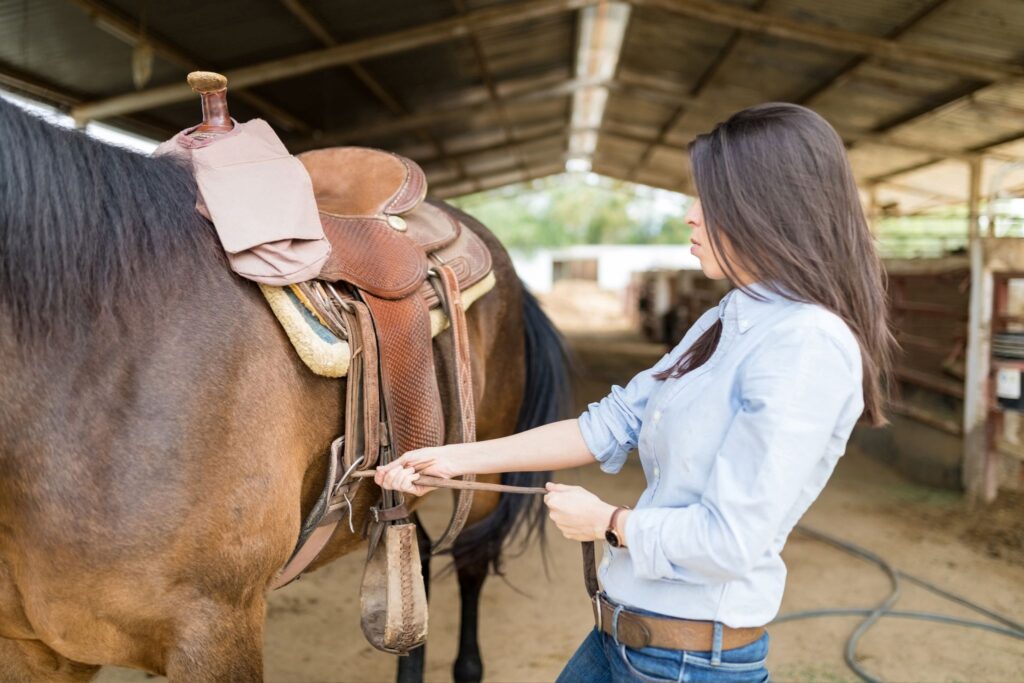
Source: Canva
Slowly tighten the girth. Do this in several phases.
Some horses know how to inhale to expand their abdomen as you tighten the girth; for this reason, you should always at least double, if not triple-check girth tightness before mounting (and after warming up).
Tightening the girth slowly is also more comfortable for your horse. Doing so will help avoid “girthiness,” or grumpiness during girthing.
Follow along as ThisEsme tacks up her horse for a showjumping session:
Bridling
Bridling should be the last step. Before bridling, you should already have your boots and helmet on so you’re completely ready to go.
Some riders put the bridle on over the halter. This method ensures that the horse is never untied, minimizing the risk of it getting loose.
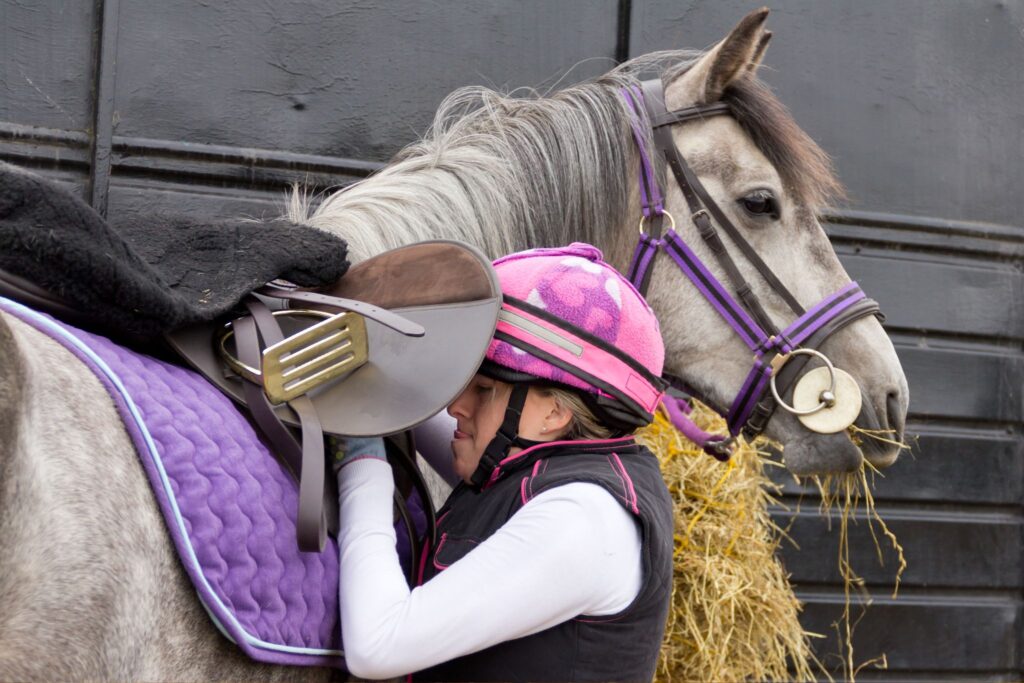
Source: Canva
Most riders undo the halter and fasten it loosely around the neck, just behind the head. This is the safest method, as the horse is still somewhat secured in case something happens during the bridling process or it tries to wander off.
If you remove the halter completely, at least put the reins around the horse’s neck first so you always have something to control the horse.
If you’re riding Western, check out this tack-up video from Jeffers Equine:
Parting Thoughts
Selecting the correct tack and equipment for your horse is an important first step. There are a ton of options available, and it can be overwhelming.
Once you find the tack that fits you and your horse, be sure to clean and inspect it regularly to maximize its lifespan.
When tacking up your horse, be aware of your surroundings and make sure the horse always knows where you are.
Frequently Asked Questions
Q: How do you select the right saddle for your horse?
There are a ton of factors to consider when selecting a saddle. Saddles must fit both you and your horse, should be appropriate for your chosen discipline, and within your budget. This article provides a great guide!
Q: What tack do you need to ride a horse?
At a minimum, you’ll need a saddle, saddle pad, girth, and bridle. As a rider, you’ll need boots with a heel and hard sole and a helmet.
Q: How do I choose a horse bridle?
First, you’ll want to consider your chosen discipline. There are both English and Western bridles; but they can get even more specific than that (for example, a
Bridles can be made from leather or synthetic materials.
Bridles come in different sizes, such as pony, cob, horse, and draft.
Most bridles don’t come with bits. Some bridles are designed to be used without a bit (bitless bridles).
This article highlights the best bridles by discipline.
P.S. Enjoy this article? Trot on over to:
- Safe vs. Scared Mindset
- Curry Confusion: Horse Grooming Terms for Beginners
- Inside the Equine Mind: Pursuing Horse Psychology
- Why Equestrian Safety Matters (Above All Else!)
- Neigh 911: Equine Emergency Preparedness Made Simple



